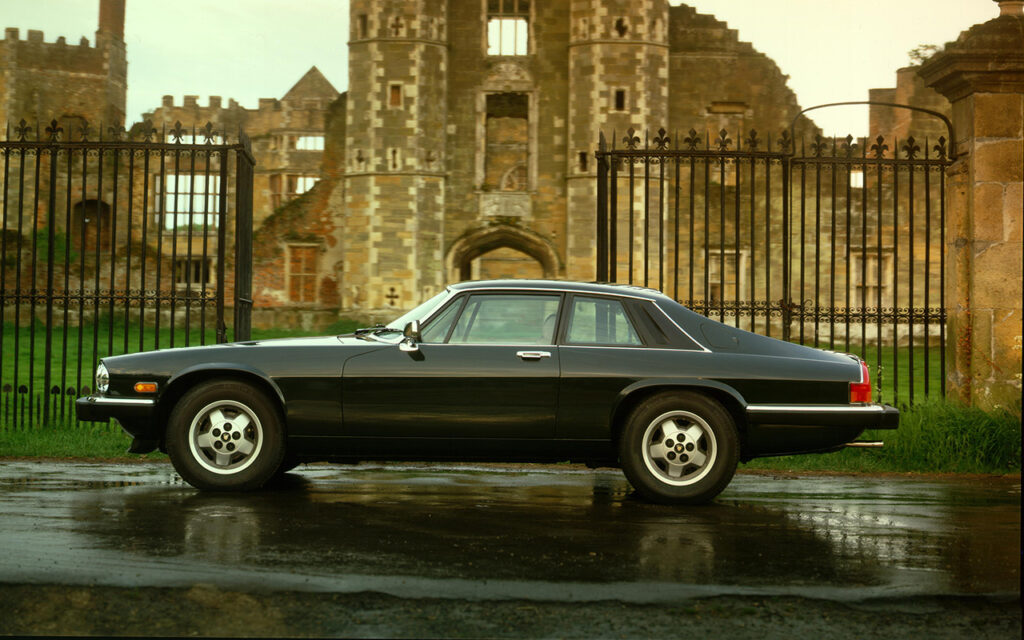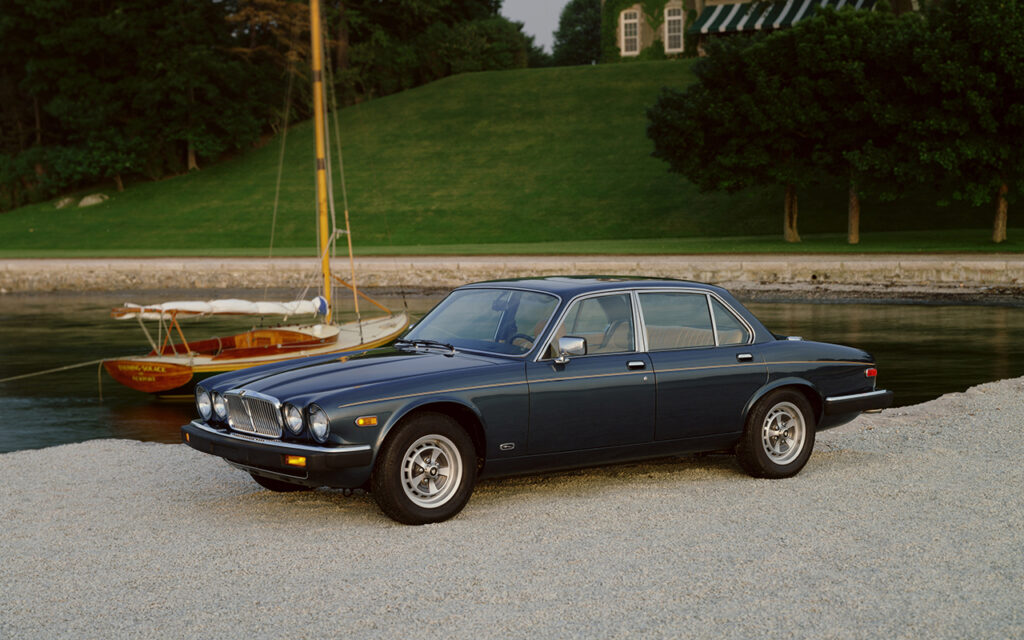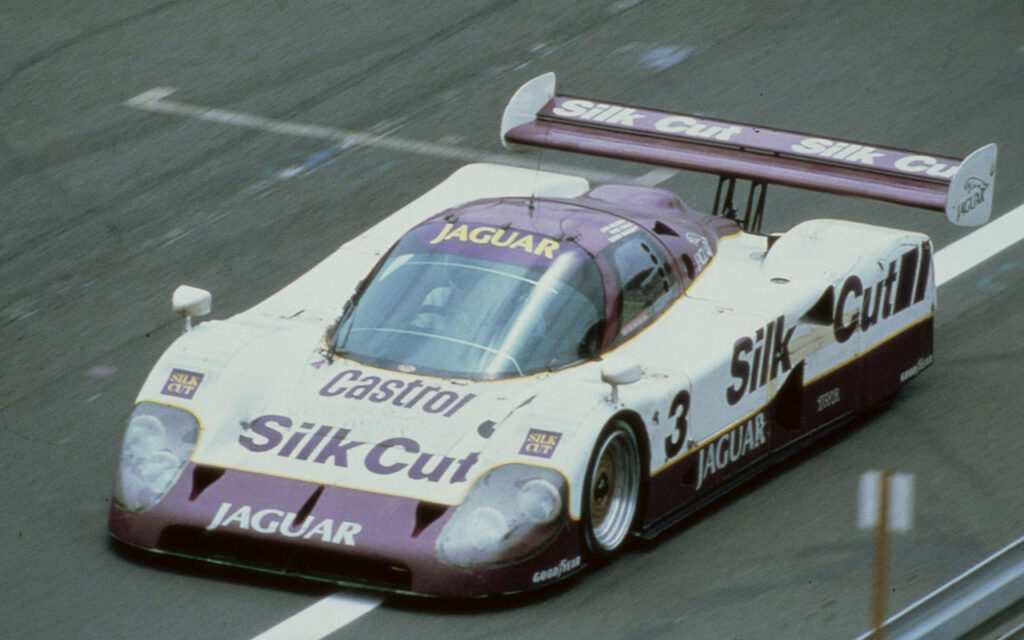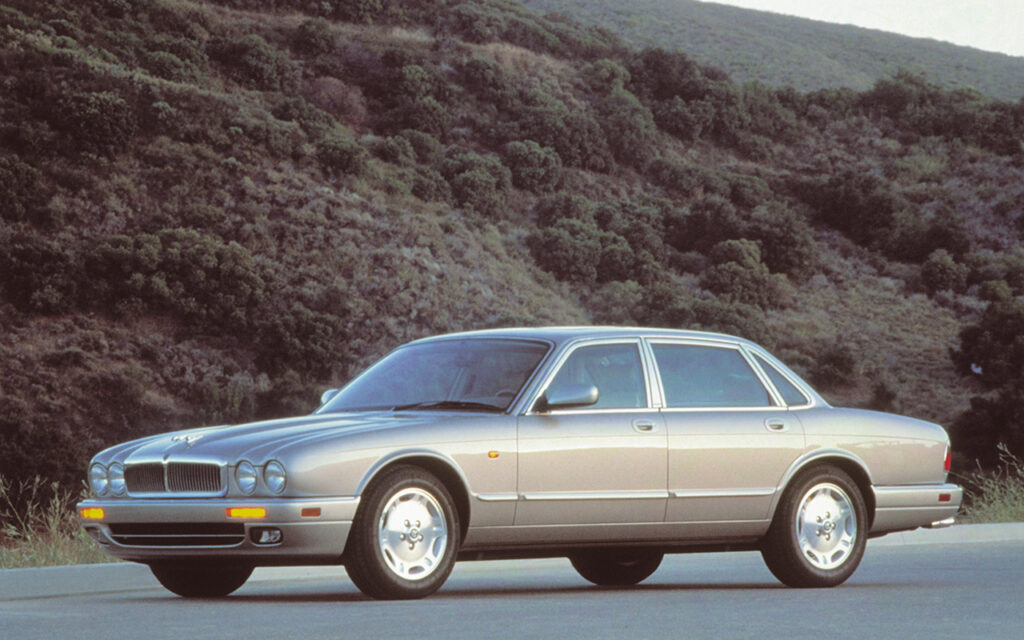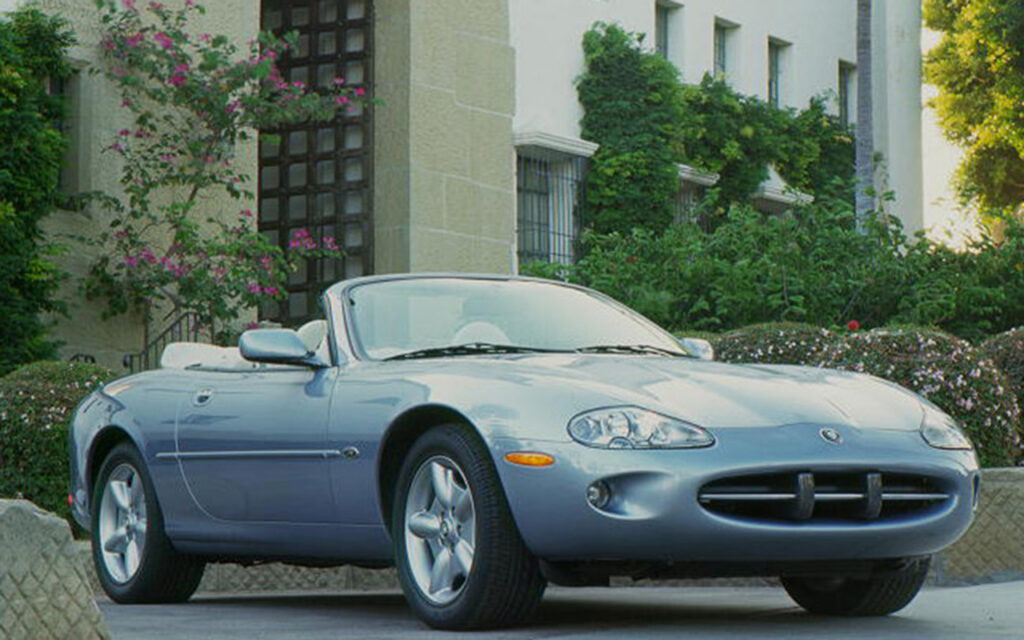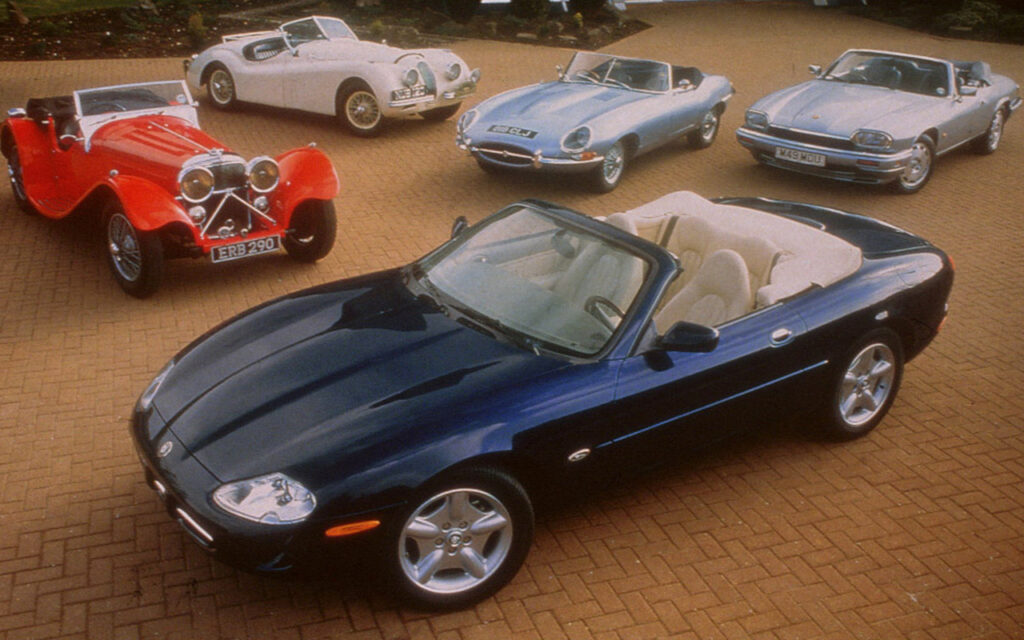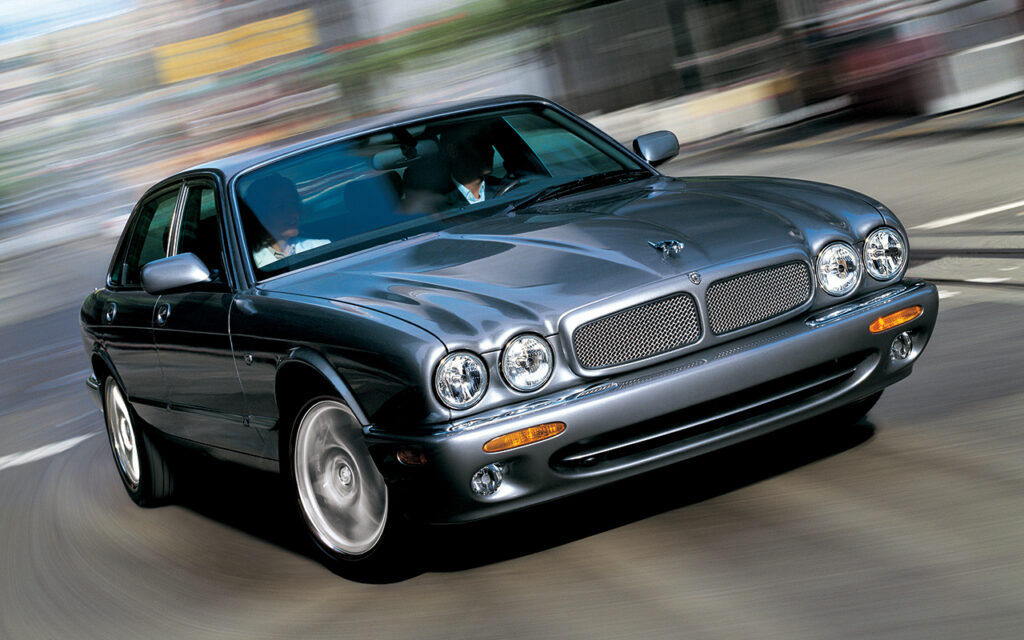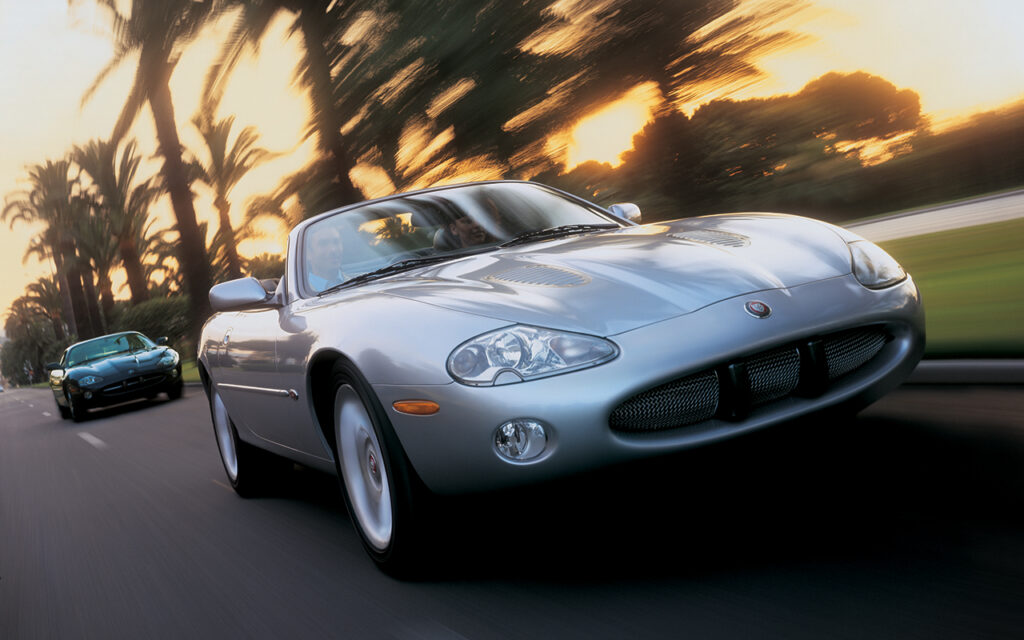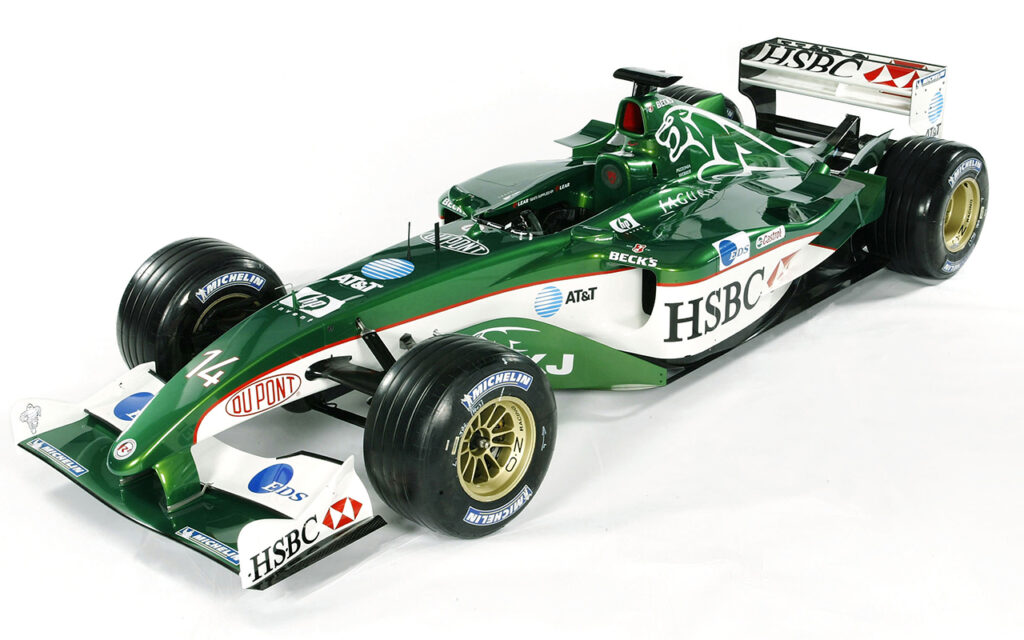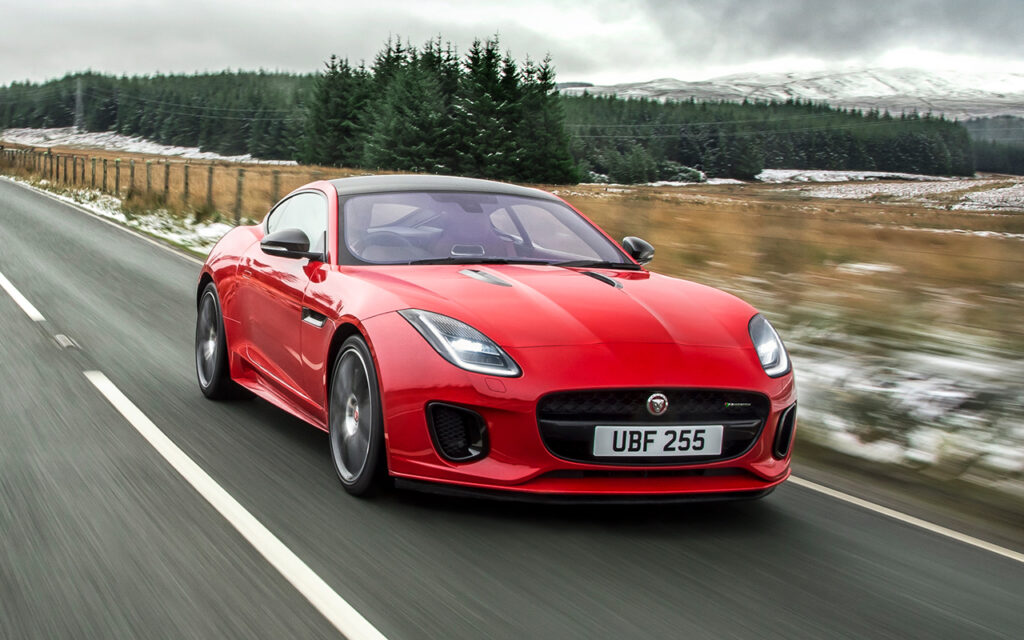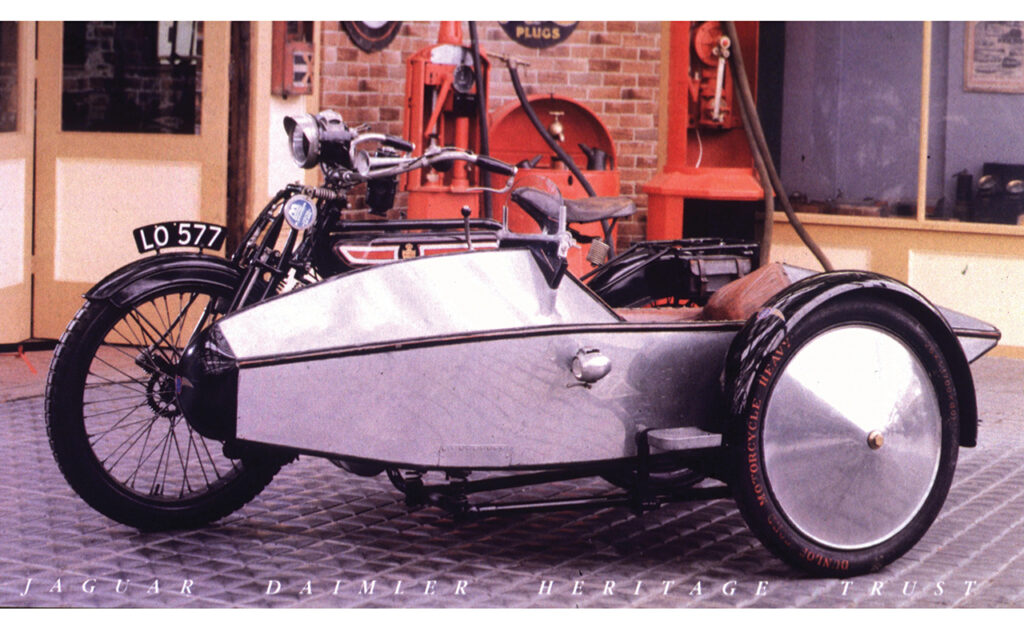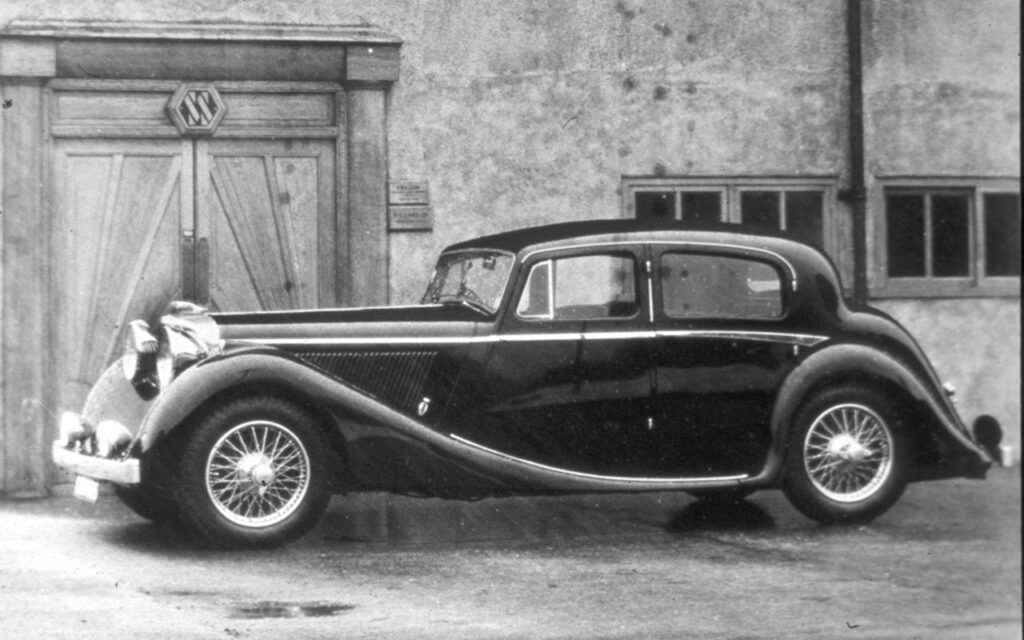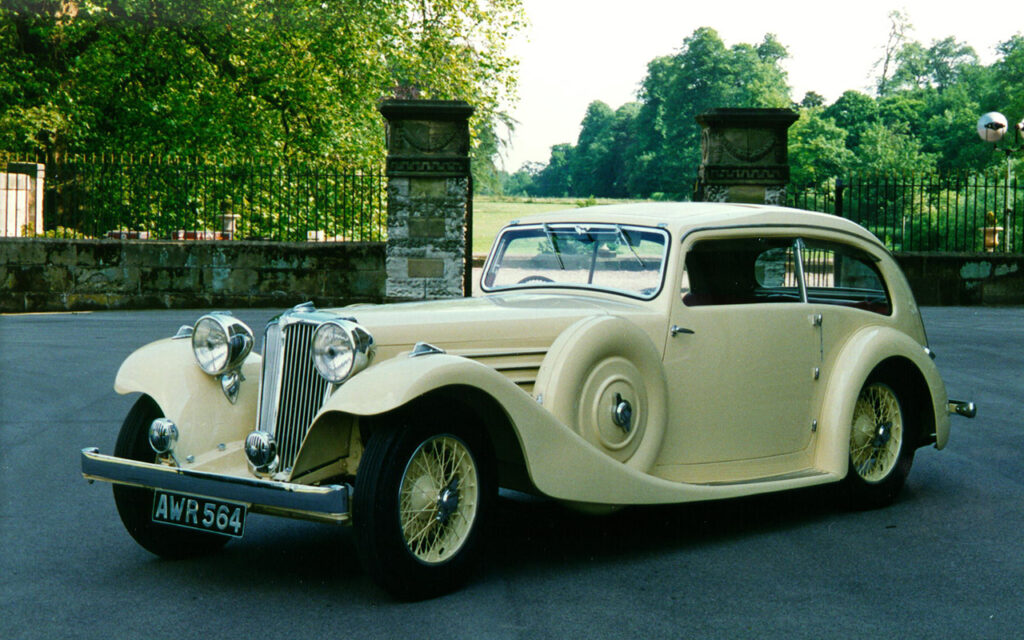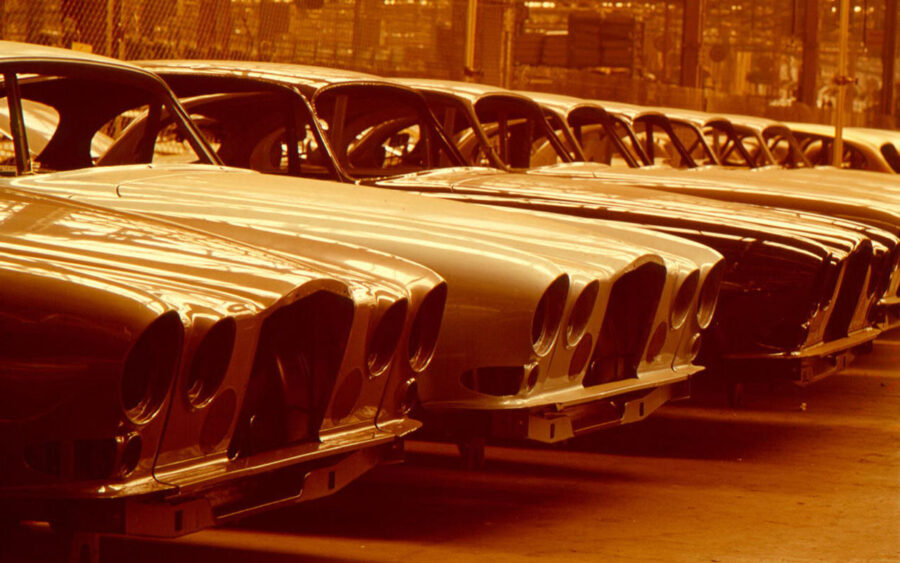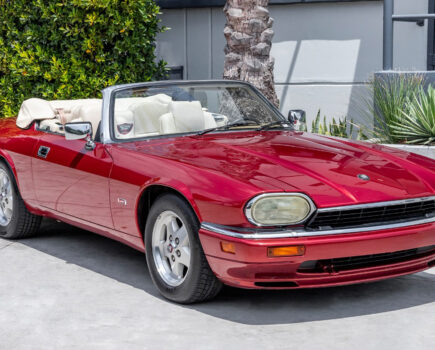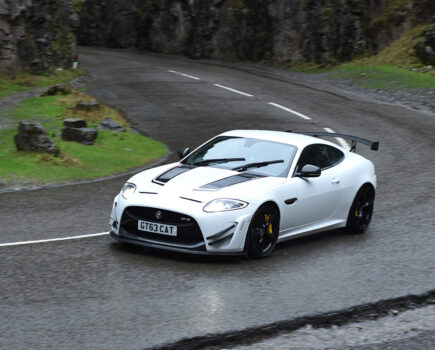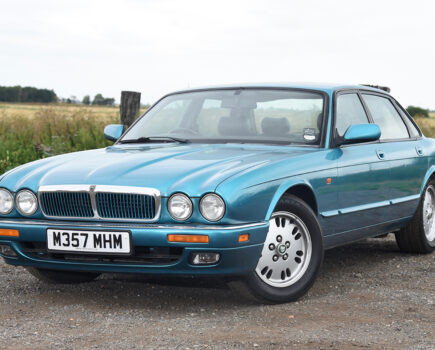Jaguar has been producing cars with space, grace and pace for the best part of a century; today, it’s one of Britain’s last mass-market car makers
Words: Paul Walton
The history of Jaguar is the history of the British motor industry itself. It’s about humble origins and British ingenuity; it is about global success and cars that would become famous all over the world. But it is also about decline and the eventual takeover by a foreign entity. At the beginning, though, it was just about one man.
Born in Blackpool on 4 September 1901, William Lyons was the son of William, an Irish musician turned piano tuner, and Maty Jane Barcroft. The young Lyons attended the local grammar school and wasn’t a keen student, however he did have an affinity with all things mechanical. He bought his first motorbike when he was a teenager, a 1911 Triumph, the first of many that would be parked outside the family home on Blackpool’s King Edward Avenue.
Living a few doors down from the Lyons family home was William Walmsley. A former world war one solder, nine years old than Lyons, he was another motorcycle enthusiast and had designed a handsome bullet-shaped sidecar, its aluminium bodywork left unpainted. Other local bikers became interested in the design and he began producing the sidecar in his garage on a limited basis. The sidecar soon caught the attention of Lyons who subsequently bought one. The two Williams struck up a friendship and in September 1922 went into business to build and sell the sidecar on a larger scale.
The newly named Swallow Sidecars was a success, but the ever-ambitious Lyons wanted more and in 1927 the company began offering a coach-built version of the Austin Seven. Knowing Blackpool didn’t have the carproducing skills Lyons required if he was to grow his fledgling company, he moved it to Coventry, the heart of British car building. Other coach-built models soon followed based on Fiat, Standard, Swift and Wolseley chassis.
The turning point in the company’s history came in 1930 when Lyons came to an agreement with the Standard Motor Company for it to provide chassis and engines to be fitted with Lyons’ own stylish bodies. The first was the handsome S.S.1. Its long bonnet, low roofline and rakish good looks would become a Lyons’ trademark over the coming decades.
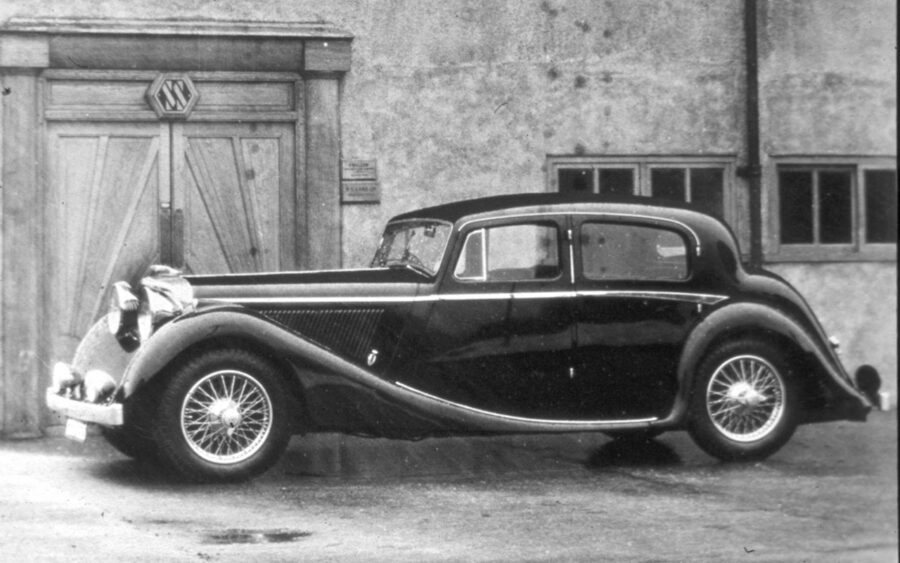
The Jaguar name first arrived in 1935 manifesting as a range of cars – the S.S. Jaguars – that included a four-door saloon and a beautiful two-seater sports car. Featuring a new 2.7-litre six engine, the S.S. 90 was as fast as it was handsome, as was the S.S. 100 that followed and featured an upgraded 3.5-litre version. This was Lyons’ first true sports car and every Jaguar model since can trace its lineage directly to this car.
With Walmsley leaving the company in 1935, by the time war erupted four years later Lyons had transformed his humble sidecar company into a serious automobile manufacturer, exporting his cars to the lucrative American market. Bur the company’s engines were still produced by Standard and so whilst firewatching at the height of the war from the factory roof, engineers Claude Bailey, William Heynes and Wally Hassan dreamt up an engine that would transform the company’s cars into a class of their own.
1940s
After the hostilities had ended (and the company had dropped its now politically awkward S.S. name to just Jaguar) production of the company’s post-war models was restarted. Its first all-new car, the MkV, was a handsome saloon, but very much a stopgap. Behind the scenes a brand new car was being developed that would feature the new engine dreamt up on the factory roof that would replace the old pushrod motor.
Wanting to publicise this new XK engine unit before the saloon was ready (it wouldn’t appear until 1950), at the 1948 London Motor Show Jaguar unveiled a stunning new sports car. Using a cut-down chassis from the forthcoming saloon, it featured a 3.4-litre version of the new engine (a 2.0-litre also planned, but never realised). With its beautiful voluptuous body and claimed top speed of 120mph (a huge figure for the era) the XK120 was the star of the show.
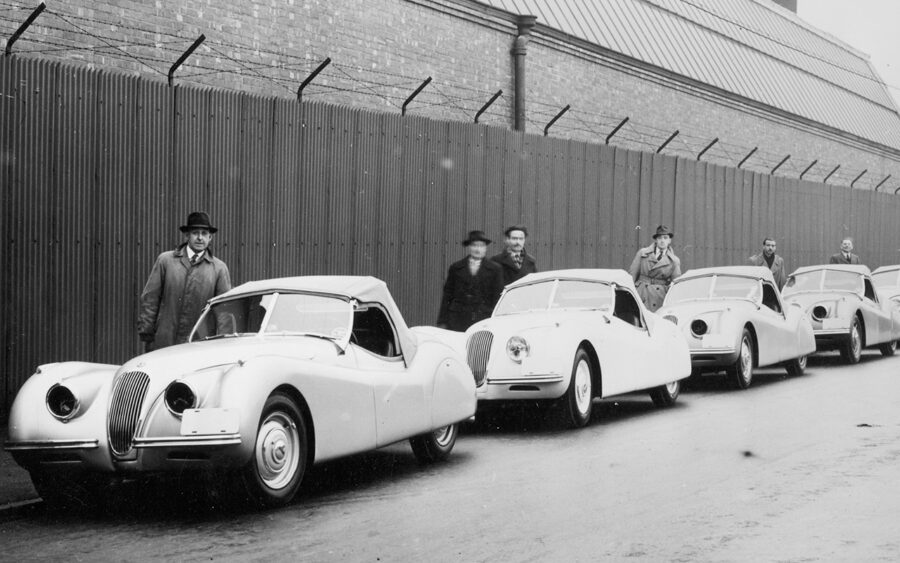
It wasn’t long before the car reached the track, with its first victory being the 1949 Daily Express One Hour Production Race at Silverstone. By the following year, XK120s were entered in all of the major European races, including the Targa Florio in Sicily, France’s 24-hour race at Le Mans and the epic Mille Miglia, the 1,000-mile dash from Brescia to Rome and back again. In September, a young Stirling Moss took the car’s first major victory at the Dundrod TT in Northern Ireland.
To begin with Lyons had no interest in racing; the company was more concerned with getting the new saloon, the Mk VII, (there was no Mark VI) into production. But eventually he could see the benefits of racing and after fielding a semiworks team of XK120s for both rally and track events (the most famous being the Alpine Rally-winning car, registered NUB 120), the car was transformed into a genuine race car.
1950s
In 1951 Jaguar employed a former aeronautical aerodynamicist, Malcolm Sayer, to do it. Although the car had a new tubular chassis frame and a more aerodynamic body, it was christened the XK 120C, which was soon shortened to just C-type. With the 3.4-litre XK engine under the bonnet, the car was quick and reliable, as proven when it won the 1951 Le Mans, a feat it repeated two years later.
Jaguar’s range was slowly developed, with the XK 120 giving way to the XK140 in 1953 that featured bigger bumpers and more precise rack and pinion steering, but Jaguar’s biggest step forward was with the 2.4 Mark I saloon from 1955. As the first Jaguar to feature a monocoque chassis the Mark I was a small and nimble saloon that, when joined by the 3.4 version, was fast too.
In 1954 the company had revealed the Malcolm Sayer-designed D-type, a brand new purpose-built racing car that featured improved aerodynamics and, from 1955, a 3.8-litre version of the XK engine. As the car to beat during the mid to late Fifties, the D-type won Le Mans an impressive three times in 1955, 1956 and 1957. Jaguar pulled out of racing at the end of 1956, their official works car having been beaten that year by the talents of privateer team Ecurie Ecosse. David Murray’s team bearing the Scottish Saltire would go on to lift the trophy again in 1957.
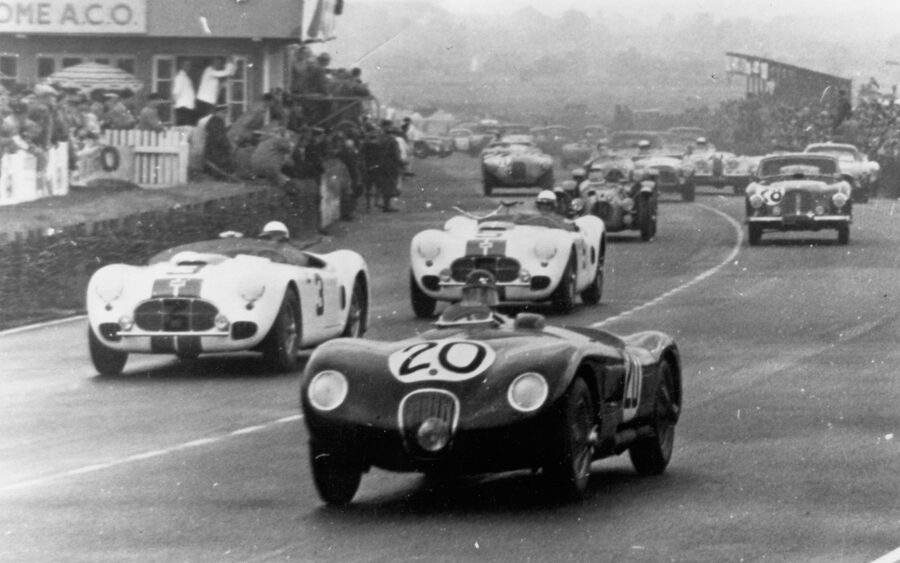
By the end of the 1950s, the car had lost its competitive edge, not helped by new rules in sports car racing which outlawed engines over 3.0 litres. With Jaguar still having unsold examples, the factory began to convert these into a road-going sports car called the XKSS. The argument as to whether this was a stop-gap solution to use up expensive racing equipment or a long-term plan was cut short in February 1957 a devastating fire raged through Jaguar’s factory at out Browns lane in Coventry (the former shadow factory the company hail moved into during 1952). Nine of the 25 cars that were in various stages of completion were destroyed, as were the car’s jigs and tooling, effectively ending production.
1960s
Although the XKSS was very much Jaguar’s past, 1960 saw the first hint of the company’s future. At that year’s Le Mans the American racing team, Briggs Cunningham, entered a new type of Jaguar. With its cowled lights and oval grille, it was clearly inspired by the D-type but was larger and with better proportions. This was the E2A. a one-off prototype that didn’t even finish the race yet is hugely significant as the forerunner of the car that would come to define Jaguar and the decade it came from.
Unveiled at the Geneva Motor Show in 1961, the E-type stunned the world with its amazing looks. Enzo Ferrari called it ‘the most beautiful car ever made’; designed again by Malcolm Sayer, it was the result of everything he’d learnt about aerodynamics during the Jaguar’s racing years, while under the skin it featured a brand new independent rear suspension layout plus the faithful 3.8-litre XK unit. This layout was also used for Jaguar’s new large saloon the Mk X which, like the Mk 2 from 1959, had a unitary chassis.
As the 60s unfolded, the E-type was constantly upgraded and modified; the 4.2-litre version of the XK engine arrived in 1965, while a stretched 2+2 coupe was added to the range in 1966. Although not as pretty as its two-seater sibling, the 2+2 was important because it made the car slightly more practical for families. A lightweight competition model was also developed by the firm’s competition department and was campaigned successfully by several private teams.
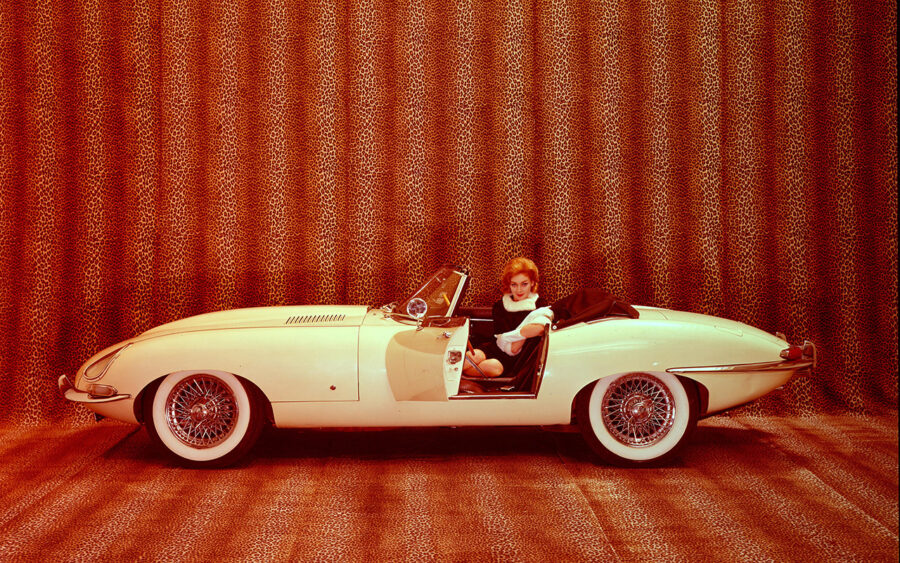
Jaguar came close to officially returning to competition in the mid-Sixties with the Sayer-designed XJ13. A handsome, mid-engined sports car that was powered by a 5.0-litre VI2, its development had been part-time and ultimately took too long. By the time the sole car was finished in 1966, its design had already become obsolete, its engine too large and the project wasn’t taken further. The engine, though, would play a significant part in Jaguar’s future.
By 1966 Lyons was in his mid-60s. With no successor following the death of his only son John, who had been killed in a car accident on route to Le Mans, he was looking for future stability and so joined BMC (British Motor Corporation – an agglomeration of the Austin and Morris car firms along with MG, Riley and Wolseley) and Pressed Steel – the company that made the bodies for Jaguar’s cars – to form British Motor Holdings. Sir William retained the title of Jaguar’s chairman and the company remained largely autonomous. But BMH didn’t last long and in 1968 it amalgamated with Leyland, the bus and truck manufacturer, which had recently acquired Standard-Triumph and Rover. This resulted in the formation of the British Leyland Corporation, a huge conglomerate of eleven car marques, of which Jaguar was now just a tiny part.
The E-type Series 2 arrived the same year and featured a larger grille, open headlights, full wrap-round bumpers plus larger rear lamps that were now situated below the bumpers. Inside, the dashboard was also redesigned with new rocker switches that met U.S. safety regulations. Cooling was improved thanks to a larger radiator and twin electric cooling fans, plus the car’s braking was substantially uprated.
Also making its debut in 1968 was Jaguar’s ground-breaking saloon, the XJ6. In one swoop the car replaced the company’s complicated saloon line-up that consisted of the 420G (a 4.2-litre-engined Mk X), the S-type (a stretched Mk 2 with a boot) and the 420 (an S-type with a similar nose to the Mk X’s with four headlights) plus, following Jaguar’s acquisition of the company in 1960, a Daimler-badged version of the later called the Sovereign.
1970s
Behind the scenes Jaguar had been working on its first new engine since the XK unit from 1948, a 5.3-litre VI2 that had been developed from the XJ13’s 5.0. Aimed squarely at the American market, it would become a Jaguar mainstay for the next 30 years. The first car to feature the engine was the E-type Series 3 from 1971, making it a very different car from the earlier models. The VI2 version of the XJ arrived in 1973.
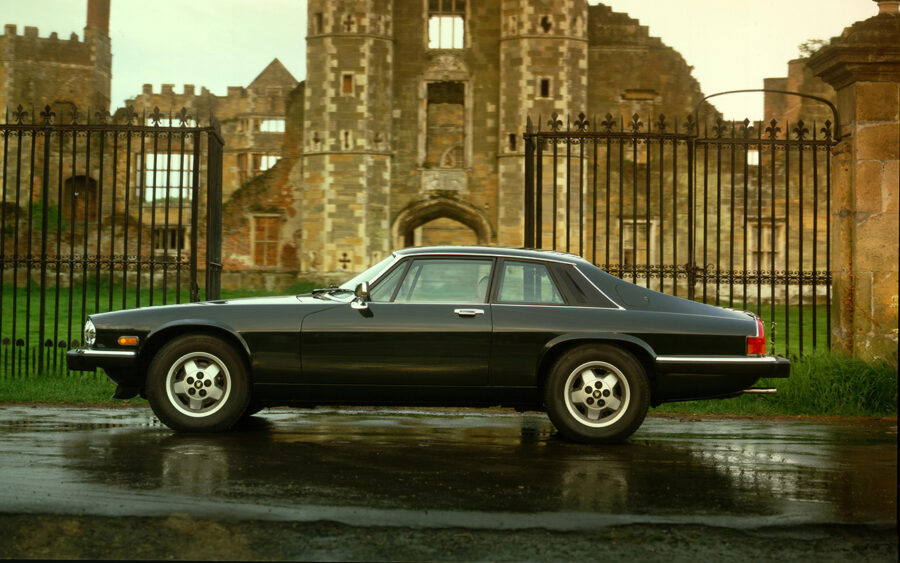
Thanks to proposed (but never passed) American legislation that would have outlawed convertibles, the E-types replacement took Jaguar in a new direction. Large, luxurious and a 2+2 coupe only, the 1975 XJ-S wasn’t immediately popular and with only one engine option, the VI2, poor economy didn’t help its cause either. Sales were so bad that by 1980, when just over 1,000 were sold, production ceased for a short time.
1980s
Help arrived in the shape of John Egan who became Jaguar’s chairman in 1980. This former Massey Ferguson director soon instigated a comprehensive drive to improve the build quality of Jaguar’s cars which had slumped under the management of British Leyland. The problem of Jaguar’s economy was also partially solved thanks to a redesigned cylinder head for the V12 resulting in the high efficiency (or H.E.) version that was used in both the XJ-S and XJ12, plus an all-new 3.6-litre straight-six engine – the AJ6 – that was initially only available in the sports car but intended for an-all new saloon that was still in development.
Knowing the company needed a halo model, Egan pushed for a cabriolet based on the XJ-S from 1983 (a very handsome full convertible would arrive five years later). The difference these changes made to the car’s sales was immediate – in 1984 6,028 XJ-Ss were produced. The company would become independent again in July 1984 when it was floated on the stock market.
Sales were so promising that in 1982 Jaguar went back to international racing for the first time since the Fifties when it entered the European Touring Car Championship (ETCC). This wasn’t the first time the XJ-S had headed to the track; the American Group 44 team had enjoyed some success with the car in the late Seventies. But the European Touring Car Championship effort, masterminded by Tom Walkinshaw Racing (TWR), was more significant. Not only was Walkinshaw himself crowned the 1984 ETCC champion but the campaign would lead Jaguar back to sports car racing and two further victories at Le Mans in 1988 and 1990.

The most important new saloon during the 80s was the XJ40 that replaced the XJ Series 3 in 1986. A brand new car that featured either a 2.9 or 3.6-litre version of the AJ6, it was also the first Jaguar to feature onboard diagnostic and engine management systems. However, pushed through development too quickly, the car wasn’t ready for production and early models suffered from poor reliability. Although this was slowly improved, the car would tarnish Jaguar’s image for years.
Yet by the end of the 80s Jaguars fortunes had improved to such a degree it was the ideal target to be taken over. After coming close to a deal with General Motors, Jaguar was eventually bought by Ford for £1.6 billion in 1989.
1990s
The first car to be launched under Ford’s ownership was a special one, the XJ220. Starting life as a concept in 1988, it was subsequently put into production by a satellite operation that was owned jointly by TWR and Jaguar. With a top speed of 217mph this was a fully paid up member of the supercar club, a rival to the Ferrari F40 and Porsche 959.
The XJ-S was given a £50m facelift in 1991, but the most significant car of the 1990s was the XK8 that replaced the XJ-S in 1996. With soft curves that were clearly inspired by the E-type, this handsome car was very different from the angular XJ-S. More importantly, power came from a brand new 270bhp 4.0-litre V8 that replaced the straight six and the VI2 that by now had been enlarged to 6.0 litres.
The V8-engined X308 XJ soon followed (replacing the six-cylinder X300 XJ). Both XK and XJ had a supercharged version that with 370bhp, which made them the fastest mainstream production cars in Jaguar’s history up until that point.
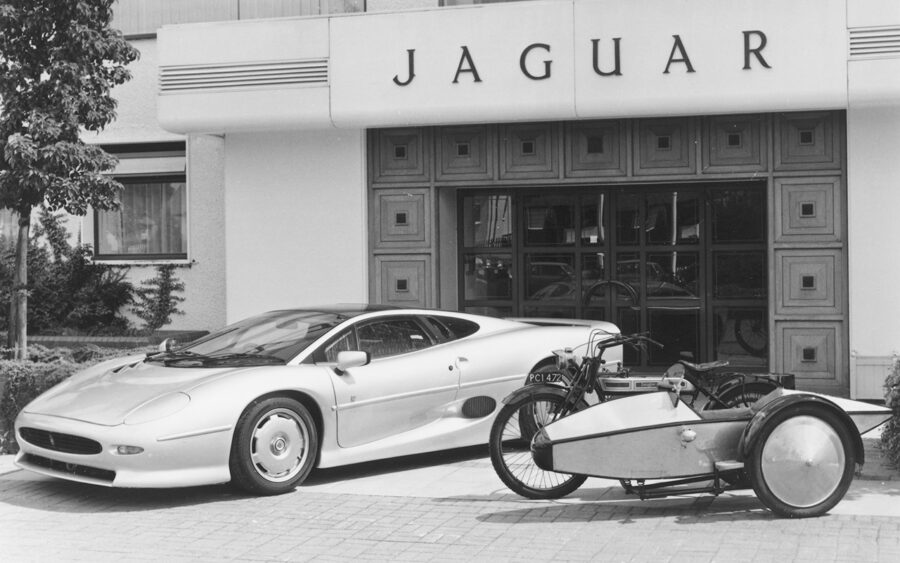
A one-off car based around the XK8, the XK180, was created to celebrate the XK engine’s 50th anniversary in 1998. Small, handsome and reminiscent of the D-type, the car was well received and Jaguar designers looked at creating a production version. Sadly the F-type Concept never got further than a single prototype which was unveiled at the 2000 Detroit Motor Show. Purists would have to wait a little longer for a genuine two-seater Jaguar sports car.
With Ford money now being pumped into the company, Jaguar could branch out into other new markets. The first was the retro-styled 1998 S-Type (named and designed after the Sixties saloon of the same name) that would compete with the BMW 5-Series in the executive market. This was followed by the smaller Ford Mondeo-based X-Type a couple of years later.
2000s
The all-new XJ X350 arrived in 2003 which, although still following the XJ’s traditional design, was constructed from aluminium, producing a car that was both light and rigid. The majority of Jaguar’s future models would be produced from the material.
This included the XK8/XKR’s replacement in 2005, the new XK150 XK which had been developed under the nametag Advanced Lightweight Coupe Concept. The first car to be entirely designed by new studio boss, ex-Aston Martin man Ian Callum, it was a handsome coupe and convertible that again was powered by the V8. although now enlarged to 4.2 litres.
Sadly, despite Jaguar’s very expensive 2000-2004 Formula One effort that raised the company’s profile but saw little in the way of results, sales were poorer than expected. After an international high of 130,322 in 2002, that had slipped to 120,000 a year later. Ford tried to save costs, including the closure of Jaguar’s famous Browns Lane assembly plant in 2005.
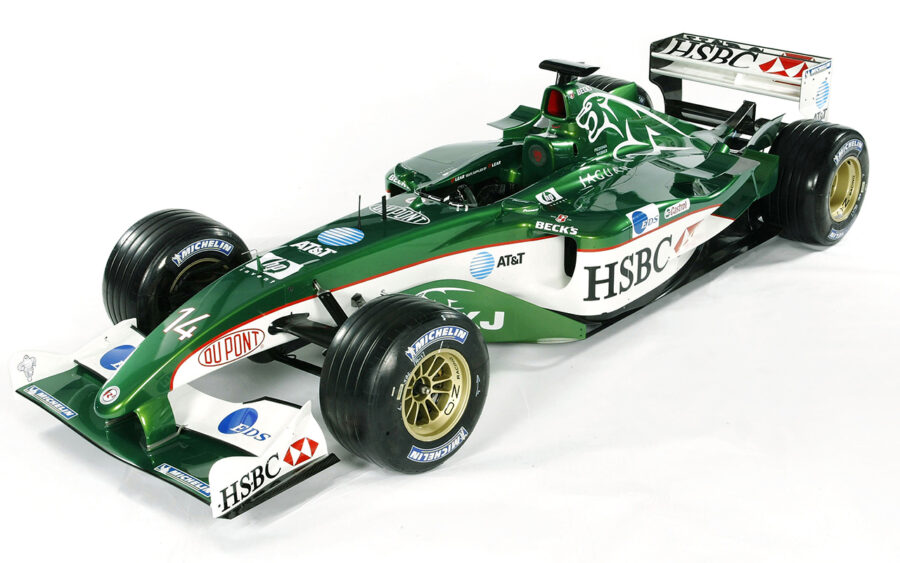
But the writing was on the wall. In 2007 Ford made it known the company was for sale and after being courted by several suitors. Jaguar was eventually sold (along with Land Rover to create a new joint company, Jaguar Land Rover) to the Indian industrial giant, Tata.
With a very enthusiastic new owner, Jaguar’s rebirth could begin starting with the XF that replaced the S-Type in 2008. It may have used the old car’s chassis but it had a fresh and modern look that pointed towards Jaguar’s future. An estate version, called the Sportbrake, arrived in 2012. An Ian Callum-designed X351 XJ was revealed in 2009. It followed similar styling cues from the XF, making it the biggest departure from the model’s traditional design since the XJ40.
2010s to present day
In 2010 Jaguar enlarged the capacity of its V8 to 5.0 litres, which when supercharged to over 500bhp, boosted the performance of any car it was fitted to. The XKR became a harder-edged sports car, with the ultimate version being the 2013 XKR-S GT. With power increased to 542bhp and lowered, lightened and coming with a full aero package, the car was the clearest illustration yet of Jaguar’s new found confidence.
This was proven again in 2013 when the first proper Jaguar sports car since the end of the E-type 40 years earlier was revealed. Again produced from aluminium, the F-Type was a modern car but with a few subtle nods to its famous forebear. Power came from a 3.0-litre V6 or the 5.0-litre V8 and it replaced the XK/XKR coupe.
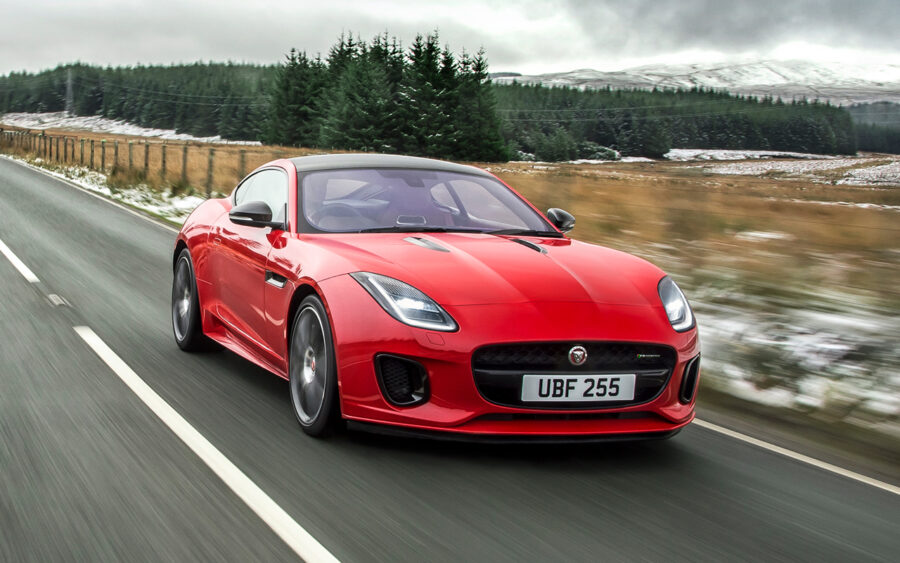
With new cars coming thick and fast during the second half of the decade — including Jaguar’s first SUV, the F-Pace in 2015 and its first all-electric car, the I-Pace, three years later. The Jaguar E-Pace was Jaguar’s take on the booming small luxury SUV market in 2017.
Jaguar reached its centenary milestone in 2022 with one eye on electrification and another on its enviable heritage. The company’s future at the forefront of automotive technology and design looks as exciting, with a number of new all-electric models expected to arrive in the coming years.
Jaguar’s internal combustion era may be coming to a close but there’s a lot to look forward to as the brand forges ahead.
